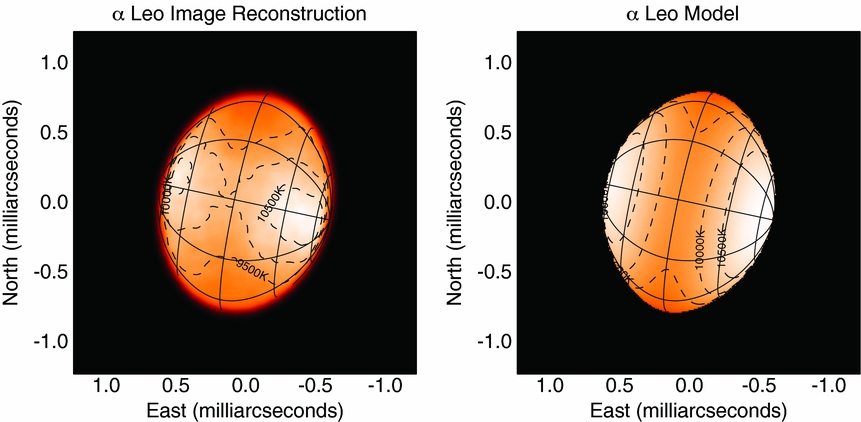
CHARA images of the rapidly rotating star Regulus. Stellar rotation causes a star's shape to be flattened at the poles and bulged at the equator. Because the equator is further from the center of the star, it will appear cooler than the poles, an effect called "gravity darkening". The reconstructed image on the left shows the surface intensity distribution of Regulus, overplotted with latitudes and longitudes from a model fit. The dashed contours represent the surface brightness temperatures of the image. The image on the right shows a gravity darkened model that was fit to the data, overplotted with brightness temperature contours from the model.
Click here to compare Regulus to other rapidly rotating stars.
Reference:
Colder and Hotter: Interferometric Imaging of β Cassiopeiae and α Leonis
Che et al. 2011, ApJ, 732, 68



